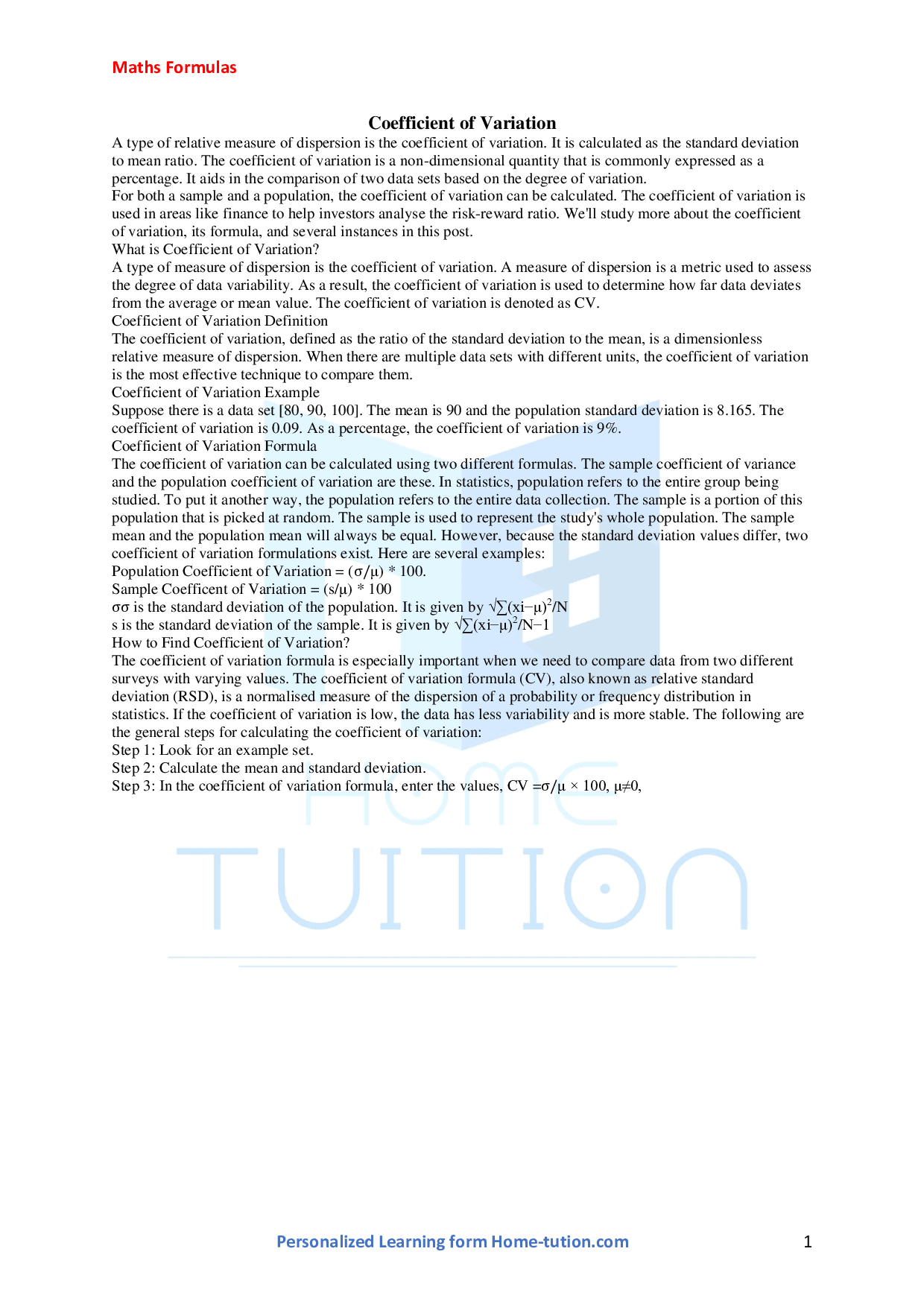About Coefficient of Variation
A type of relative measure of dispersion is the coefficient of variation. It is calculated as the standard deviation to mean ratio. The coefficient of variation is a non-dimensional quantity that is commonly expressed as a percentage. It aids in the comparison of two data sets based on the degree of variation.
For both a sample and a population, the coefficient of variation can be calculated. The coefficient of variation is used in areas like finance to help investors analyse the risk-reward ratio. We'll study more about the coefficient of variation, its formula, and several instances in this post.
What is the Coefficient of Variation?
A type of measure of dispersion is the coefficient of variation. A measure of dispersion is a metric used to assess the degree of data variability. As a result, the coefficient of variation is used to determine how far data deviates from the average or mean value. The coefficient of variation is denoted as CV.
Coefficient of Variation Definition
The coefficient of variation, defined as the ratio of the standard deviation to the mean, is a dimensionless relative measure of dispersion. When there are multiple data sets with different units, the coefficient of variation is the most effective technique to compare them.
Coefficient of Variation Example
Suppose there is a data set [80, 90, 100]. The mean is 90 and the population standard deviation is 8.165. The coefficient of variation is 0.09. As a percentage, the coefficient of variation is 9%.
Coefficient of Variation Formula
The coefficient of variation can be calculated using two different formulas. The sample coefficient of variance and the population coefficient of variation are these. In statistics, population refers to the entire group being studied. To put it another way, the population refers to the entire data collection. The sample is a portion of this population that is picked at random. The sample is used to represent the study's whole population. The sample mean and the population mean will always be equal. However, because the standard deviation values differ, two coefficient of variation formulations exist. Here are several examples:
Population Coefficient of Variation = (σ/μ) * 100.
Sample Coefficient of Variation =(s/μ)* 100
σσis the standard deviation of the population. It is given by√∑(xi−μ)2/N
s is the standard deviationof the sample. It is given by√∑(xi−μ)2/N−1
How to Find Coefficient of Variation?
The coefficient of variation formula is especially important when we need to compare data from two different surveys with varying values. The coefficient of variation formula (CV), also known as relative standard deviation (RSD), is a normalised measure of the dispersion of a probability or frequency distribution in statistics. If the coefficient of variation is low, the data has less variability and is more stable. The following are the general steps for calculating the coefficient of variation:
- Step 1:Look for an example set.
- Step 2:Calculate the mean and standard deviation.
- Step 3:In the coefficient of variation formula, enter the values, CV =σ/μ× 100, μ≠0, To get all the Maths formulas check out the main page.
